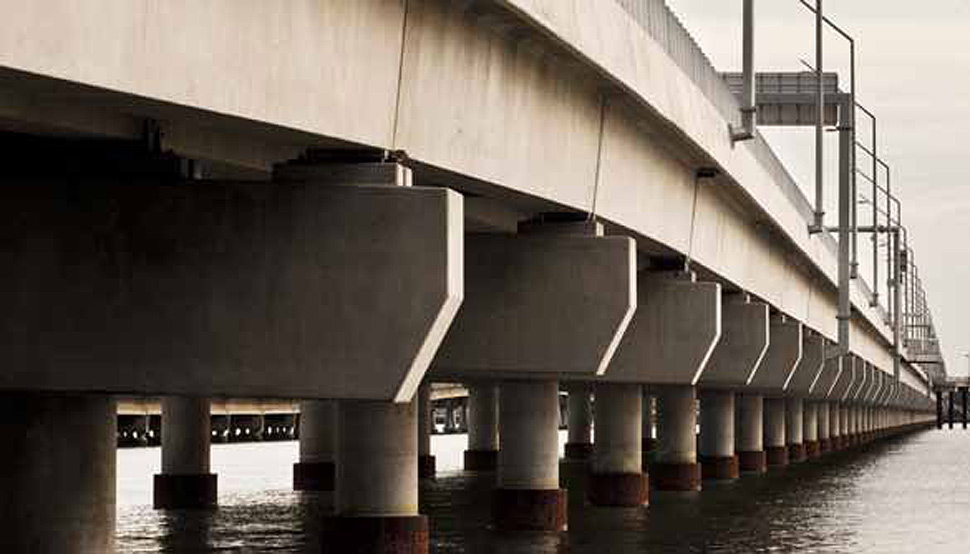Australia's longest bridge - built on steel
The Ted Smout Memorial Bridge, Australia's longest bridge at 2.7 kilometres, opened in July 2010 and supports the rapidly growing transport needs of south east Queensland.
Credentials:
Location: BrisbaneCountry: Australia Project
Size: 3000 tonnes of XLERPLATE® steel
Client: Queensland's Department of Transport and Main Roads
Engineer: Hull-Albem Joint Venture
Fabricator: RPG Australia
This is a major infrastructure investment that supports the rapidly growing transport needs of south east Queensland.
Named after Queensland's last surviving World War I digger, the bridge consists of 78 spans, each 35 metres long and joins the Moreton Bay side communities of Clontarf and Brighton on the northern edge of Brisbane. It is the first bridge in Australia designed to withstand Hurricane Katrina-type storms.
Approximately 3,000 tonnes of XLERPLATE® steel grade AS3678-250 was used in the project, both for piles in the bridge foundations, as well as the bridge's temporary work platform. The platform was used for cranes and workmen as they 'migrated' across the bay to build the bridge. Steel from the temporary platform and its temporary piles was reused for other projects after the bridge was constructed.
Foundation piles were driven up to 39 metres into the sea bed, then reinforced with concrete and capped with concrete headstock and girders. The bridge was then fitted with concrete barriers, guard rails and electrical conduit. The southern and northern abutment of the bridge included land reclamation works involving a seawall and embankment.
BlueScope Steel supplied RPG Australia with the XLERPLATE® steel for the manufacture of permanent and temporary piles, as well as the working platform. Hull-Albem Joint Venture was the project engineer and the client was Queensland's Department of Transport and Main Roads.
RPG rolled and welded the XLERPLATE® steel to form 27 metre long piles, whilst also cutting and welding platform beams. Many of the steel piles used in the bridge foundations were filled with concrete, with a primary reason for the use of steel being its watertight characteristics. The project demanded high levels of quality assurance, including full material traceability, weld testing and full QA checks to ensure piles were manufactured to meet Department of Transport and Main Roads requirements.
The bridge duplicates an existing bridge on the Houghton Highway, reducing traffic congestion and enhancing safety, whilst it also features a pedestrian/cycle path. But one of the more interesting characteristics of the bridge is that it includes an extensive fishing platform. No doubt there are plenty of keen fishermen, women and children from other parts of Australia looking on enviously at this innovation!




